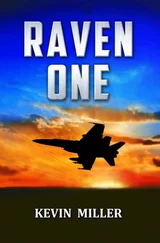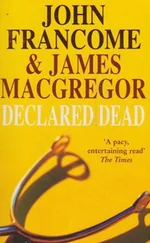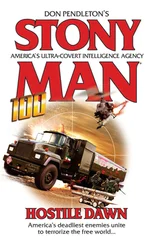Energized, he crunched along with his stick and one good leg toward the pleasant sound of the water. By a stream, he had to be careful of humans as well as animals, but needed to move by day. His game plan was to get near and then stay in the brush in order to watch and listen before approaching the stream as the sun set. Afterwards, he would find a place to hunker down for another cold and damp night. As he dragged through the forest, Wilson realized the stream was more east than north, but he had to have water — and he could follow the stream to the sea.
No helicopter sounds. Wilson didn’t expect a rescue, but he thought the Venezuelans would have several helos up searching for him. And would have dropped teams of soldiers to search for him. No shouts. No vehicle sounds. He tried to remember from the briefing what the topography was like… mangroves . Flat. He found another break in the trees and looked south. He saw that the forest sloped up to a ridge. Rolling hills? Where are the mangroves? It didn’t make sense, but the aeronautical charts he had reviewed in his planning were not detailed land navigation charts. He should have crammed one into his g-suit pocket… one of many omissions on this hurry-up strike.
After two hours of effort, he still could not see the stream. And it sounded no closer. Exhausted in the midday heat and humidity, he eased himself down. Sleep. A short nap in the shade. Plenty of daylight left . He would find the stream this afternoon, regain his strength, and be in a good position to traverse a fair amount of ground tomorrow. He was hungry, but not yet hungry enough to eat a lizard or large insect. That would come, though, according to survival accounts he had read over the years.
Weak and wounded, crawling through the jungle, evading and serving with honor. He thought of stories from the Vietnam War: Dieter Dengler. Lance Sijan. Bud Day. Downed American airmen who didn’t give up. Of the three, Dengler made it to rescue. Starving, naked, weak from exposure and injuries from their ejections. Escaping from the enemy. Crawling inch by inch to freedom fighting jungle rot and disease. Incredible stories. Their examples were the performance bar Wilson and his generation had to meet. As the pain returned, he wondered if he would be able to even reach for the bar — with only one good arm and one good leg.
Wilson lay down in the dirt, shaded by a fern. Just a few minutes , he thought, enough to catch my breath . Resting on his stick, he focused his eyes on a hole in the foliage to the northeast. Through the leaves he could make out distant trees on another hillside almost a mile away. Another mile of rolling forested terrain.
Where the hell am I?
(Columbus Channel)
Annie rolled out wings level and descended to her delivery altitude only a few hundred feet above the waves in the Columbus Channel. With Jumpin on her right wing in a loose tactical formation, she bumped up the airspeed and selected air-to-ground. She then designated her offset aimpoint on the southern tip of Agave Rock and slewed the cursors over it. The green steering cues on her HUD jumped, and she saw, on her tactical display, the “mine line” she would soon overfly to deliver two 1,000-pound mines across the mouth of Río Salta.
At Annie’s seven-o’clock, a mile in trail, were Olive and Irish, and behind them was a division of Raiders from the two-seat Rhino squadron VFA-23. The eight aircraft were the mine-layers, call sign Stream , with Annie in the lead. Above her to the south, a division of Arrow FA-18Es formed a barrier combat air patrol, serving as a layer of defense from any FAV fighters dispersed from San Ramón or sortied from Caracas. Behind the Streams , a suppression package of Growlers and HARM shooters from the Hobos provided jamming and electronic attack against any SAM radars that may be painting them. At least the Streams could take comfort that, while they had their heads down working their targeting systems, no threat would come at them from the side or the back.
Coral Sea had moved closer during the night, but not so close that Annie’s strike birds didn’t require tanking from Air Force KC-10s before descending toward the Columbus Channel — and their target. With clear weather the Colombian early warning radars may have seen them come off the tanker and obtain a raid count. Now on the surface, the mine-layers could take added comfort that their jets, weighed down with heavy, drag-inducing mines, were able to avoid detection by enemy tracking and guidance radars, which the Hobos planned to suppress anyway.
AAA and hand-held SAMs, however, were always a problem. Even over the water they could be present on any of the dozens of small craft scattered about in the Stream ’s path. Any knucklehead on deck with a popgun might get a lucky shot into a cockpit or into a vital area of the aircraft. As Annie led them into the Columbus Channel, they could avoid the small craft, all painted white, with mild heading changes, but in the narrow part it was trickier. And, once Annie designated and got on her steering line, she would be committed. The mines had to go in their assigned “holes.”
Annie had three miles before she needed to turn right and get on the pickle switch. Ahead of her, dead in the water, was a small boat, maybe 30 feet, a typical Caribbean fishing boat with a small cabin up forward. Annie would fly right over it, and if anyone on deck saw her and wanted to, all they had to do was fire straight up and the fighter would fly right into the bullets. To avoid such a possibility, the Streams , under Annie’s lead, could then select GUN and strafe the boat, keeping their heads down. This was war, and the unknown boat was a threat to her and those behind. With only seconds to struggle with the decision, she pulled up and left at the last moment. She then overbanked down and right to get on her steering. As she looked out the top of her canopy, she saw a man and a boy on the boat stare at the Hornet in awe as it thundered past. Annie had made the correct decision.
“Just popped over an innocent fishing boat. Ignore it,” she transmitted to the others. Rolling out and leveling off again, she hit the initial point and turned right on course. “ Stream lead is IP inbound, Armstrong .”
Annie heard the Magnum calls from the Hobos and the Comet EA-18Gs, and saw the HARMS streak by high above as they looked for “trons” to home in on. The Raiders were in position and nothing had yet come up to challenge them. Roaring over the waves, with young Jumpin holding position on her right wing and her airframe moaning at the high airspeed, Annie saw another vessel in her path. This one was an oilfield service vessel, dead in the water along her steering line and inside Venezuelan waters. Approximately 200 feet long, the aft half of the boat was flat, and it had a superstructure forward. This boat could pose a threat to Annie and the others following her, or maybe not. Again, with only seconds to decide, she put her GUN pipper on it and pulled the trigger — holding it down.
A cloud of gun gas formed over her nose as she watched small tracers of 20mm explode away from her toward the boat. She concentrated on the forward superstructure and then kicked the rudder pedals to spray the length of the boat. From a mile behind, Olive saw the long, thin cloud of gun gas float behind Annie’s jet and, moments later, the bullets made the water “boil” all around the service vessel on Annie’s nose. Annie made a small jink and got back on heading.
Читать дальше












